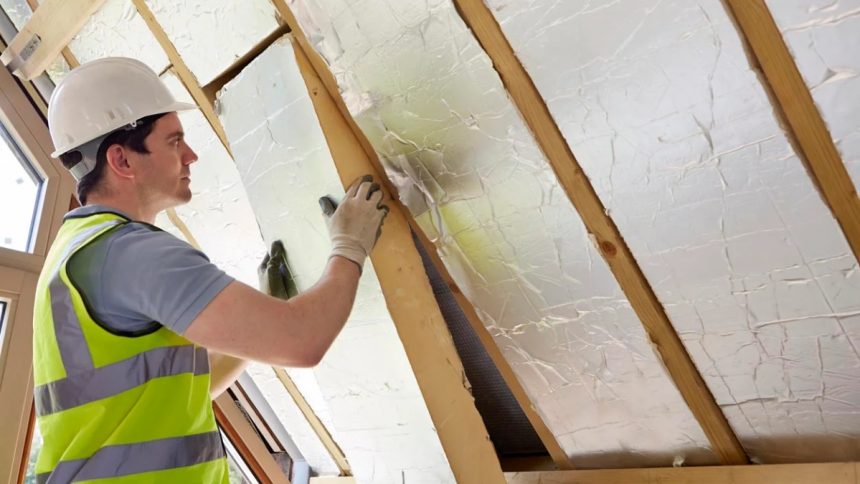Insulation plays a crucial role in enhancing the energy efficiency and comfort of homes. With the continuous rise in energy costs accompanied by ever-growing environmental concerns, it’s more important than ever to educate yourself about proper home insulation. However, the effectiveness of insulation is highly dependent on the quality of its installation. This makes choosing the right insulation installer such as EnviroBead a critical decision for homeowners.
1. Understanding Different Types of Insulation Materials
The market offers a variety of insulation materials, each with its unique properties and applications. The most common materials include fiberglass, cellulose, foam board, and spray foam.
Fiberglass insulation is best known for its straightforward installation process and affordability, making it a widely chosen option among homeowners. It typically comes in batts or rolls, which can be easily fitted between studs and joists, facilitating a quick and effective installation.
Cellulose insulation, on the other hand, is an environmentally conscious choice, primarily composed of recycled paper that is treated with fire retardants for enhanced safety. It’s particularly beneficial for those looking to reduce their ecological footprint.
Foam board, composed of polystyrene or polyurethane, is valued for its high insulating power despite its relatively slim profile, making it ideal for spaces where thicker materials cannot be accommodated.
Spray foam insulation is unique in its ability to expand and conform to the space it’s applied to, creating an exceptional air barrier that seals gaps and crevices with precision. This property makes it highly effective in preventing air leakage, a key factor in maintaining energy efficiency within a home.
When selecting an installer, it’s important to ensure they have comprehensive knowledge of these materials. They should be able to recommend the most suitable type for your specific needs, considering factors like your home’s location, climate, and structure.
2. Evaluating the Installer’s Knowledge of R-Value
The effectiveness of insulation is measured in terms of R-value, which indicates its thermal resistance. The higher the R-value, the better the material’s insulating properties. An adept insulation installer should not only understand R-value but also be able to calculate the appropriate R-value needed for your home. This involves considering local climate conditions and energy codes. Assessing an installer’s knowledge in this area can be done by asking how they determine the R-value for different parts of the home.
3. Assessing the Safety Standards of the Installer
Safety is paramount in insulation installation. The process often involves handling materials that can be harmful if not managed properly. A professional installer should use protective gear such as masks, gloves, and goggles, and be well-versed in safe handling and installation practices.
When choosing an installer, inquire about their safety protocols. This includes how they handle insulation materials and their strategies for ensuring both their safety and that of the homeowners during the installation process.
4. Installation Expertise in Various Home Areas
Different areas of a home, such as walls, attics, basements, and crawl spaces, require distinct approaches to insulation. For instance, insulating an attic might involve loose-fill or batt insulation, while walls may be better suited for foam board or spray foam.
The installer’s expertise in handling these diverse scenarios is crucial. Look for an installer who has experience with the specific areas of your home that require insulation. Ask about their technique and approach to dealing with challenges like pipes, wiring, and structural obstructions.
5. Sealing and Ventilation Knowledge
A competent insulation installer must understand the balance between insulation, sealing, and ventilation. Insulation works best when air leaks are minimised, and this often involves sealing gaps and cracks. However, adequate ventilation is essential to prevent moisture buildup and ensure good air quality.
Evaluate an installer’s expertise in this area by discussing how they plan to maintain a balance between sealing for insulation efficiency and providing sufficient ventilation.
6. Checking Credentials and Past Work
Verifying the credentials of an insulation installer is essential. This includes checking their licenses, certifications, and insurance coverage. A reliable installer should also be able to provide references or examples of their past work. Reviewing their portfolio and seeking feedback from previous customers can offer insights into their work quality and reliability.
7. Understanding the Insulation Process and Timeline
Knowing what to expect during the insulation process is important. This includes understanding the timeline, the extent of disruption to daily life, and any preparations needed on your part. A professional installer should provide a clear outline of the project duration and any necessary steps you need to take before and during the installation.
8. Post-Installation Support and Warranties
After-service support is an important aspect of the insulation installation. Inquire about the warranties offered and what they cover. Understanding the installer’s policy on addressing any issues that may arise after the installation is also crucial. A reputable installer will offer a guarantee on their work and be readily available to provide post-installation support.
Selecting the right insulation installer is a decision that can significantly impact the comfort, energy efficiency, and even the value of your home. By taking the time to evaluate potential installers on these key aspects, homeowners can ensure they choose a professional who will provide quality, lasting insulation solutions.
Lynn Martelli is an editor at Readability. She received her MFA in Creative Writing from Antioch University and has worked as an editor for over 10 years. Lynn has edited a wide variety of books, including fiction, non-fiction, memoirs, and more. In her free time, Lynn enjoys reading, writing, and spending time with her family and friends.















